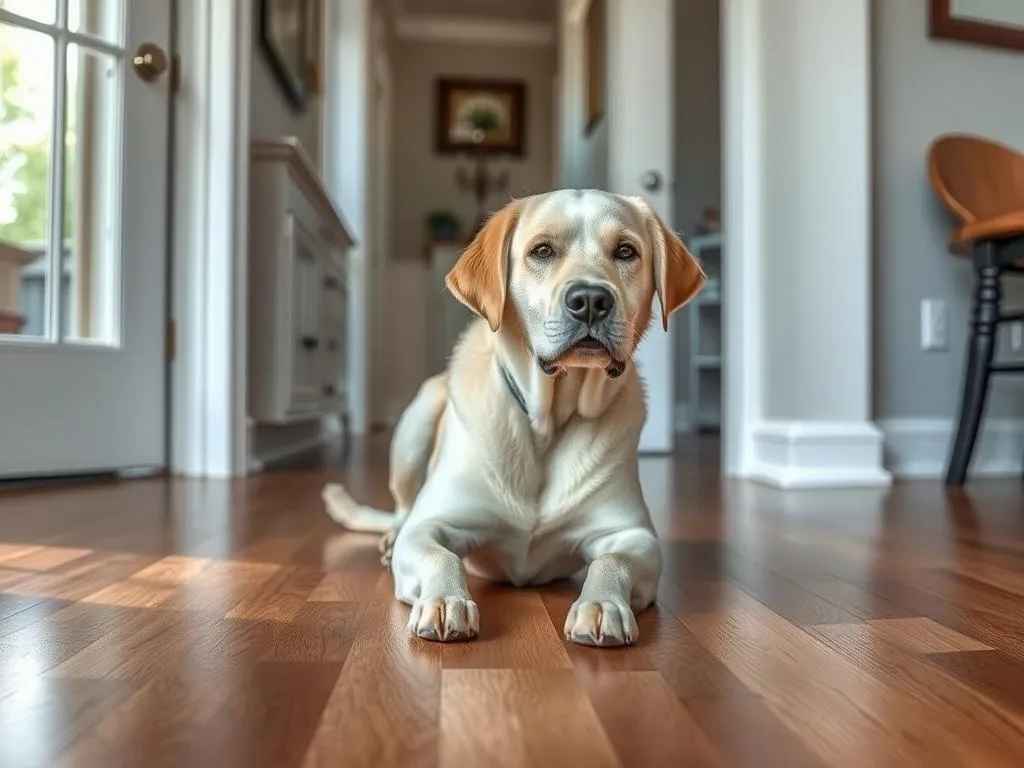
Dog ownership can bring immense joy, companionship, and lots of love into your home. However, it can also lead to a common problem: accidents on hardwood floors. When your furry friend has an accident indoors, it’s crucial to address both the stain and the odor effectively to maintain a healthy and pleasant living environment. Here’s a guide on how to get dog pee smell out of hardwood floors, ensuring your space remains fresh and inviting.
Understanding the Issue
Why Dog Pee Smell is Hard to Remove
Dog urine contains a mix of urea, creatinine, uric acid, and ammonia. When your pup has an accident, these components can seep into the porous surface of hardwood floors, making it challenging to eliminate both the stain and the odor completely. The longer the urine sits, the more it penetrates the wood, leading to a stronger smell that can be difficult to eradicate.
Risks of Not Addressing the Smell
Ignoring pet urine on hardwood floors can lead to various health risks for both pets and humans. Prolonged exposure to urine can create an environment conducive to bacteria growth, which can lead to respiratory issues and other health problems. Additionally, untreated urine can damage the hardwood itself, causing discoloration, warping, or even permanent staining.
Pre-Cleaning Preparation
Gather Necessary Supplies
Before starting the cleaning process, gather the following supplies:
- Enzymatic cleaners: Specifically designed to break down urine components.
- White vinegar: A natural deodorizer and cleaner.
- Baking soda: An excellent odor absorber.
- Hydrogen peroxide (optional): Good for tougher stains but should be used with caution.
- Mop and clean cloths: For applying solutions and drying the area.
- Scrub brush: To help lift stubborn stains.
Safety Precautions
It’s essential to use pet-safe cleaners to avoid harming your furry friend. Always read product labels and ensure any chemicals used are non-toxic. Additionally, protect the surrounding area by using towels or plastic sheeting to prevent overspray and preserve the hardwood floor finish.
Step-by-Step Cleaning Process
Initial Assessment
Start by assessing the extent of the stain and odor. Check the area to see if the urine has soaked through the surface. The sooner you act, the easier it will be to remove the smell and prevent further damage.
Cleaning Methods
Method 1: Enzymatic Cleaners
Enzymatic cleaners are specifically designed to break down the components of pet urine. They are highly effective in neutralizing odors and should be your first choice for cleaning up after your pup.
- Apply the Cleaner: Generously spray the enzymatic cleaner directly onto the affected area.
- Let it Sit: Allow it to sit for at least 10-15 minutes to penetrate the wood.
- Blot the Area: Use a clean cloth to blot the area, absorbing excess liquid.
- Repeat if Necessary: For stubborn smells, you may need to repeat this process.
Method 2: Vinegar and Water Solution
White vinegar is another excellent option for neutralizing odors. Its acidic nature helps to break down the components of urine.
- Mix the Solution: Combine one part white vinegar with one part water in a spray bottle.
- Spray the Area: Generously spray the affected area with the solution.
- Wipe Clean: After letting it sit for about 5-10 minutes, wipe the area with a clean cloth.
- Rinse: Use a damp cloth with plain water to rinse the area, removing any vinegar residue.
Method 3: Baking Soda Treatment
Baking soda is a powerful odor absorber and can be particularly effective after using one of the previous cleaning methods.
- Sprinkle Baking Soda: After cleaning the area, sprinkle a generous amount of baking soda over the spot.
- Let it Sit: Allow it to sit for several hours, or preferably overnight, to absorb any lingering odors.
- Vacuum the Area: Once the time has passed, vacuum up the baking soda. This should help eliminate any remaining smells.
Method 4: Hydrogen Peroxide (Optional)
For tougher stains, hydrogen peroxide can be an effective solution, but it must be used with care.
- Test First: Before applying hydrogen peroxide, test it on a small, inconspicuous area to ensure it doesn’t damage the finish.
- Apply: If safe, apply a small amount of 3% hydrogen peroxide directly onto the stain.
- Blot and Rinse: Blot the area after a few minutes and rinse with water.
Post-Cleaning Care
Checking for Residual Odor
After cleaning, it’s important to check for any residual odor. Walk through the area and take a deep breath to see if the smell persists. Sometimes, the odors can hide in corners or under furniture, so be thorough in your inspection.
Preventing Future Accidents
Training your dog is key to reducing indoor accidents. Consider using positive reinforcement methods to encourage outdoor bathroom breaks. Additionally, protective products like pee pads or dog diapers can be a temporary solution while your pet is still learning.
Maintaining Hardwood Floors
Regular Cleaning Practices
To prevent the buildup of odors and maintain the beauty of your hardwood floors, establish a regular cleaning routine. This can include sweeping or vacuuming to remove dirt and debris, as well as mopping with a gentle cleaner once every few weeks.
Additional Protective Measures
To further protect your hardwood floors from damage, consider applying a sealant or finish designed for wood. This can create a barrier against moisture and help preserve the integrity of the wood. Regular maintenance, such as reapplying finishes, can keep your floors looking their best while reducing the risk of permanent stains.
Conclusion
Addressing dog pee smells quickly and effectively is essential for maintaining a fresh and healthy home environment. By using the methods outlined above, you can tackle both the stains and odors, ensuring your hardwood floors remain in great condition. Remember, a proactive approach not only helps maintain your home but also contributes to a happier life for both you and your furry friend.
Frequently Asked Questions (FAQs)
How long does it take for the smell of dog urine to go away?
The duration can vary depending on the cleaning method used and the extent of the stain. If treated promptly and effectively, the smell should diminish significantly within a few hours to a day.
Will vinegar damage my hardwood floors?
When diluted properly, vinegar is generally safe for hardwood floors. However, it’s always best to do a spot test first to ensure it doesn’t affect the finish.
Can I use bleach to clean dog urine?
Bleach is not recommended for cleaning hardwood floors, as it can damage the wood and worsen the odor. Stick to pet-safe cleaners and natural remedies for the best results.
How can I tell if the smell is completely gone?
Take a deep breath and inspect the area closely after cleaning. If the smell is still present, it may be necessary to repeat the cleaning process or check for hidden stains.
What can I do to prevent my dog from peeing on the floor?
Regular training, providing ample outdoor bathroom breaks, and using protective products can help prevent indoor accidents. Reinforcing good behavior with treats and praise can also be effective.
By following these guidelines, you can ensure your hardwood floors remain clean and odor-free, creating a welcoming home for both you and your beloved dog.









